Dashi is the heart of Japanese cuisine. It plays a fundamental role in Japanese cooking. There are generally 5 different types of dashi. Learn how to make each different dashi one by one the right way! Read on to learn about Katsuo dashi and moreover, how to make the perfect Katsuo dashi.

What is Katsuo Dashi?
Katsuo dashi or bonito dashi is Japanese dashi broth made from dried bonito fillet called “Katsuobushi” in Japanese. Katsuobushi contains inosinic acid which is one of the Umami components known as the fifth flavour world wide.

What is Katsuobushi?
Katsuobushi is Dried bonito fillet and it is dried as hard as wood. The amount of inosinic acid increases during the drying process. There are so many different varieties of Katsuobushi according to which part of the bonito fish it came from, the cut and how it is made. If you have a chance to get a dried bonito fillet and also a Bonito Fillet Shaver, you can make fresh bonito flakes (Kezuribushi) at home.
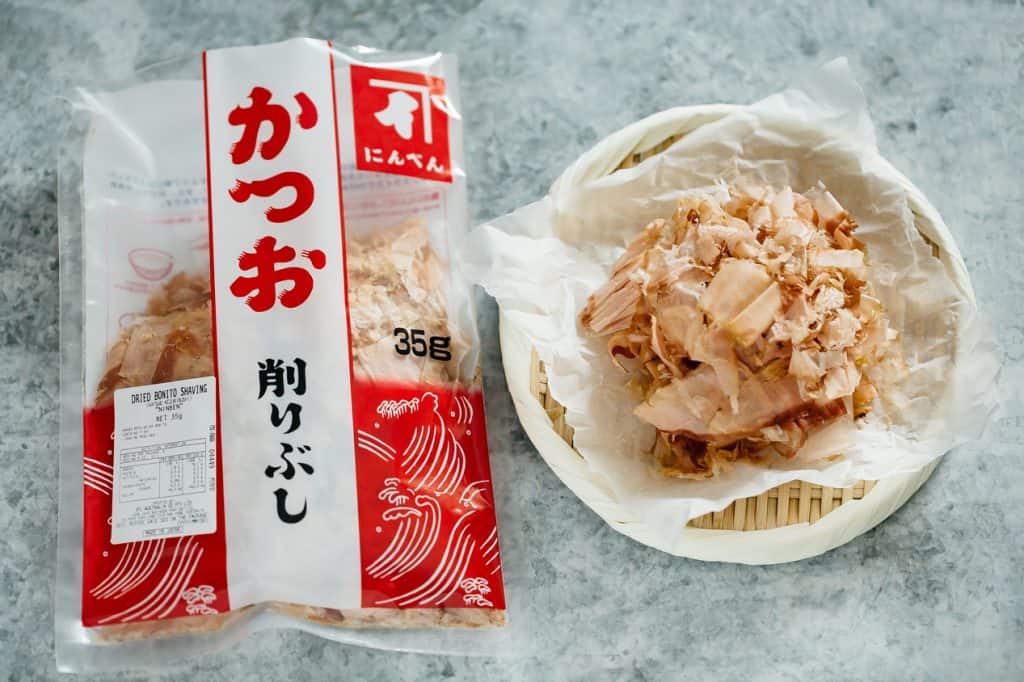
What to do if you cannot find freshly shaved bonito flakes?
If you are living outside of Japan, you may not have that luxury of freshly shaved bonito flakes. However, do not fret for we can often buy shaved and packed bonito flakes called “Kezuribushi”. Not all Kezuribushi are the same and are used for different purposes. Bonito flakes (Kezuribushi) are classified depends on the thickness and the size of the flakes. For example, some are used for extracting Umami flavour for stock and some are shaved finely which used for topping of dishes such as Okonomiyaki and Takoyaki.
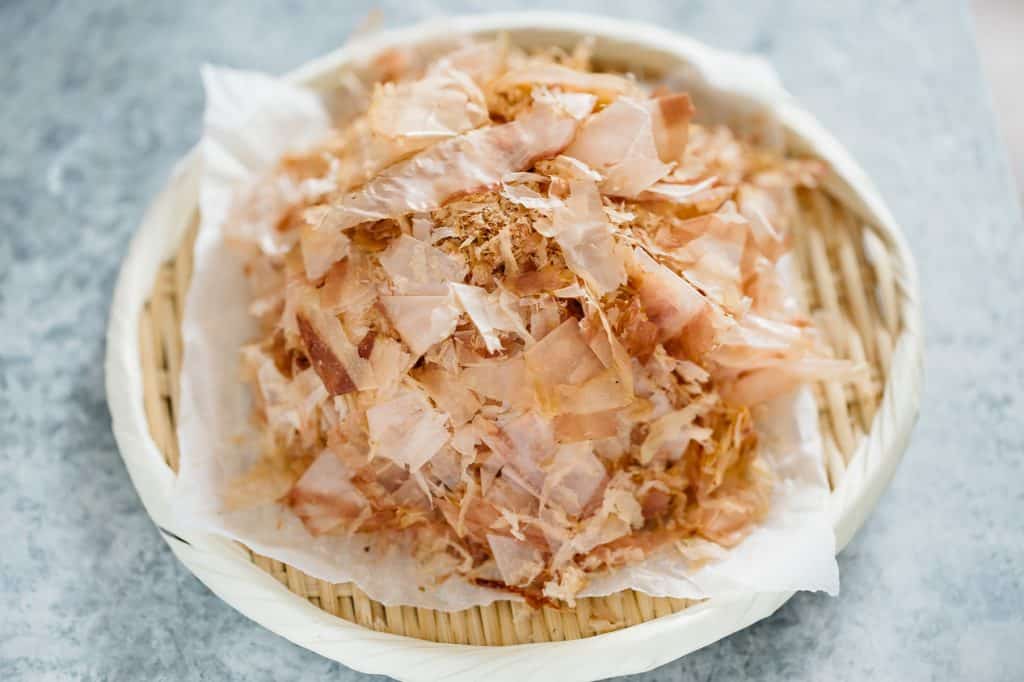
Tips to Make Perfect Dashi
- Add the bonito flake at the right time. When you see the small bubbles form in the pot, turn the heat off, and add bonito flakes. Step by step photo 1.
- Wait for a few minutes till the bonito sink to the bottom of the pot. Step by step photo 2 and 3
- Strain the bonito flakes through a sieve with lined with kitchen paper towel. Do not squeeze the liquid out of the bonito, but strain slowly. Step by step photo 4.

How to Store?
It will keep for a couple of days in the fridge. If you are not going to use it in a couple of days, freeze it in an ice tray. When it is frozen, take them out of the ice tray and place the dashi cubes in a ziplock bag. In this way, it is convenient to thaw the amount you need.
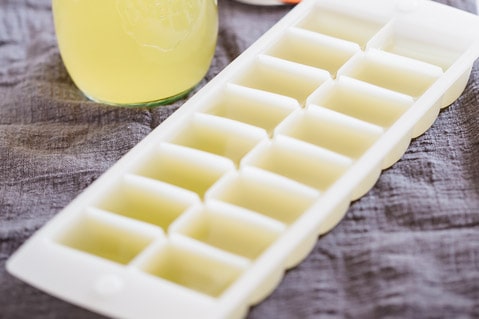
FAQ
Q: What Japanese dishes can I use Katsuo Dashi on?
A: It is good for making Miso Soup, Dashimaki Tamago, Simmered Kabocha and Chawanmushi.

Q: What do I do with the strained bonito flake?
A: It can be recycled making “Furikake” rice seasoning. See the recipe in Chopstick Chronicles Furikake post.
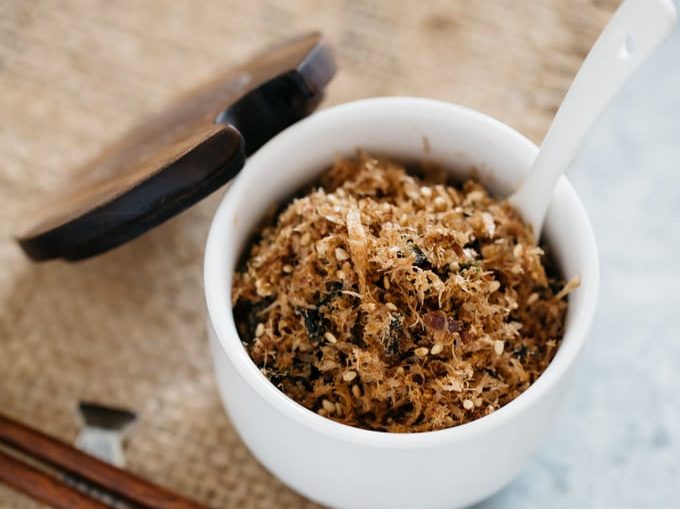
Q: My Bonito flakes in my pantry have a yellow-light brown colour. Can I use them?
A: NO. Unfortunately, when the unsaturated fatty acid contained in bonito flakes oxidises, the colour of the bonito flakes turns into yellow – light brownish colour from light pinkish colour. It is not good for your health.

Q: I bought a big packet of Kezuribushi. How do I store it?
A: You need to put them in a ziplock bag and remove as much air as you can and zip it. Keep it in your freezer. It will keep for about a month but use as soon as you can.
See The Complete Dashi Guide
Dashi plays a fundamental role in Japanese cuisine. It ultimately determines the overall taste of the Japanese dishes. Mastering Dashi makes cooking Japanese food more fun and definitely more flavourful! Learn how to prepare 5 different dashi broth .
- Katsuo (bonito flake) Dashi
- Kombu (dried kelp) Dashi
- Niboshi (dried infant anchovies/sardine) Dashi
- Shiitake (dried shiitake mushrooms) Dashi
- Awase (combined) Dashi
Stay Connected
If you liked my Kastuo dashi recipe and you made it, please leave comments below and rate the recipe.
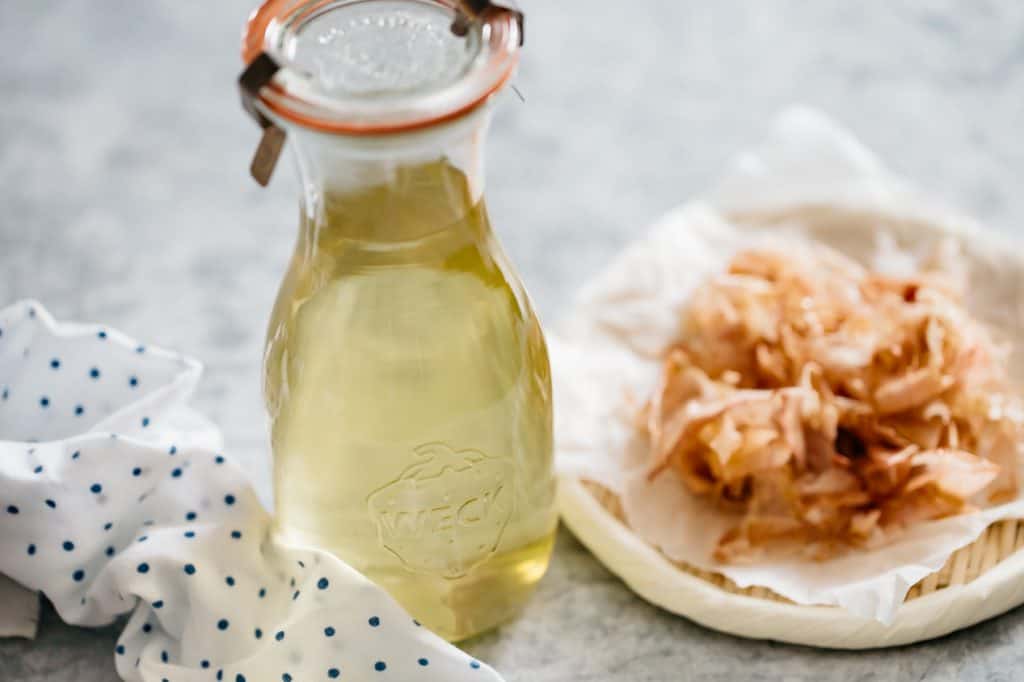
If you like the recipe please rate the recipe and leave comments below. Also don’t forget to follow me on Youtube, Pinterest, Facebook, Twitter and Instagram. This way you keep up to date with all the latest happenings on Chopstick Chronicles. Don’t forget to Sign up for a weekly newsletter so you never miss out on new authentic delicious Japanese recipes! Sign up form is on the right-hand sidebar.
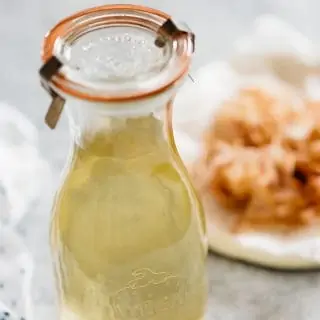
Katsuo Dashi
Ingredients
- 1oz/30 g Bonito Flakes (Kezuribushi) *1
- 4cups/1lite r Water
Instructions
- Place water in a large saucepan over medium heat.
- When tiny small bubbles start to form at the bottom of the pan, turn the heat off and add all bonito flakes. *2
- Wait for a few minutes or for the bonito flakes sink to the bottom of the saucepan.
- Line a sieve with a sheet of kitchen paper towel and place it over a large bowl.
- Strain the dashi into the large bowl.
- Leave it till all the liquid has strained slowly. Do not squeeze out liquid out of the bonito flakes. *3
- Use it for cooking or store in the fridge. *4
Notes
Nutrition
Chopstick Chronicles is a participant in the Amazon Services LLC Associates Program, an affiliate advertising program designed to provide a means for sites to earn advertising fees by advertising and linking to Amazon.com. As an amazon associate I earn from qualifying purchases.


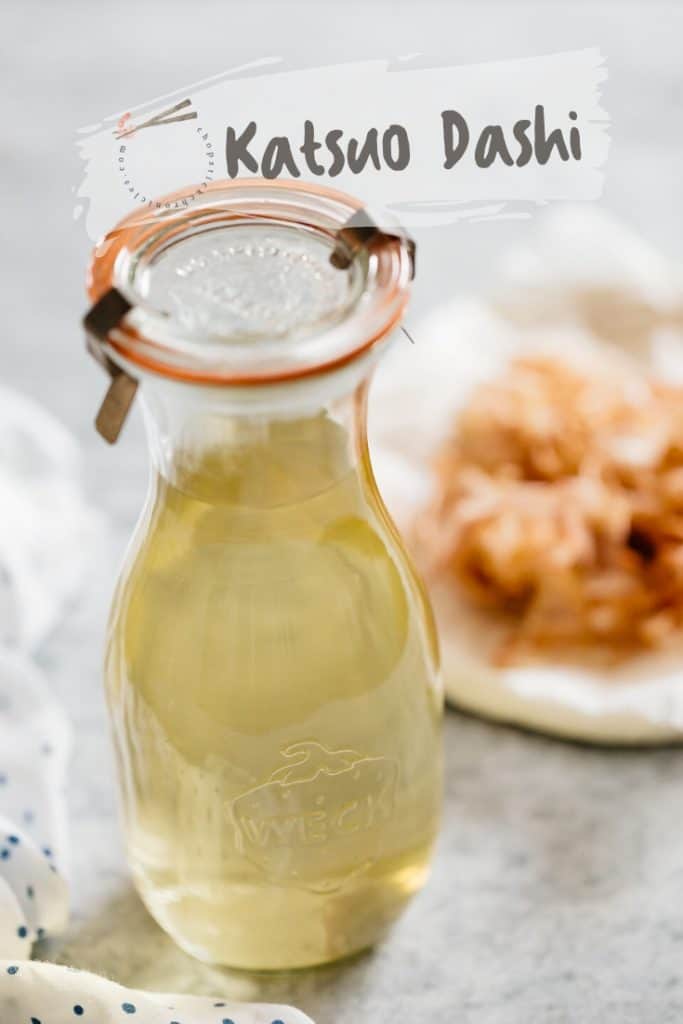
Thank you so much for this thorough and highly organized breakdown on katsuo dashi, as well as the links to more recipes!
Could you please reccomend to me some noodle recipes for katsuo dashi? I would love to make ramen with it but I don’t know if ramen and katsuo dashi are an authentic combination! 😅 What is the favorite way to prepare a hot noodle bowl with katsuo dashi?
どうもありがとうございます!
Thank you for your comment ブロンズさん。I would use this dashi for Udon or Soba noodles rather than ramen 😀
This Katsuo dashi was simple to make and I used It in my Miso soup. It added a special flavour and depth to the soup. Thank you!
Ohhh Thank you Frank, It does add special flavour doesn’t it!? I am glad that you used it for your miso soup 😀